We designed our trip with the idea of staying in one place for a month in order to de-compress following a busy and dynamic initial six weeks of travel. We also wanted to pursue some personal and professional goals in tandem with our travels and decided homesteading would help achieve those goals.
We chose Pontevedra, Galicia mainly because Lyn read an article online about how the entire city center had been turned into a pedestrian only area. Pontevedra also appealed to us because it is often the beaten path of tourist destinations and because of the Goldilocks factor (not too big; not too small; but just right).
In explaining to our families where we would be staying, I referred to Pontevedra as “the Portland of Spain” based mostly on its relative geographic location in the northwest. This proved accurate in terms of climate as well because Pontevedra has a relatively wet climate in October-November. We anticipated rainy weather but we did not expect our arrival to coincide with 12 straight days of precipitation. In hindsight, and in looking back at the photos, it did not rain steadily for 12 days but it did rain every day for some period of time, mainly because an Atlantic weather system parked off the coast and was generating bands of wetness across the entire western portion of the Iberian peninsula. We saw one warning that said to expect 700mm of rain during our first five days, which is three times the monthly average rainfall. We had some heavy downpours during that time but I don’t think the final accumulation was as severe as the forecast predicted.
We watched the weather radar to time our outings and were mostly successful at not getting caught in the wrong place at the wrong time. Mostly.
On the day we arrived by train from Ourense, we walked the 2 km (1 mile) in a heavy rain. We had our rain coats on buy we had not yet bought umbrellas. Our luggage ended up getting wetter than we did. Fortunately, our Air BnB is spacious and cozy so everything dried out in short order.
We wanted to get a sense of life here in northwest Spain, but there’s really no substitute for having friends like José and Maria to explain the texture and nuance of the social fabric and history of the area.
Pontevedra History in One Paragraph
Pontevedra is an old city, dating back to the Roman conquest of Iberia. Pontevedra is generally believed to mean “old bridge” and evolved from the Latin “pontem veteram”. In Roman times, this was the only bridge across the Lérez River, making it strategically important. Today, Pontevedra has a medieval vintage pedestrian bridge in the same location as the original Roman bridge. Additionally, the city’s harbor was sufficiently deep for seagoing ships making Pontevedra both a land and sea hub of commerce. Pontevedra’s fortunes peaked in the 1500s and it was the #2 city in Galicia after Santiago de Compostela. Nothing stays good forever, though. The river silted up and the harbor became unusable for global trade causing a decline in the city’s economy. In the 1600-1700s, a combination of disease, political strife, and war caused additional de-population (like 50%) and economic decline. The city began to make a comeback in the late 1800s and then ended up on the wrong side of the Spanish Civil War (a hotbed of Galician Nationalists). Under Francisco Franco, the neighboring city of Vigo was the “favored” child for economic development, to the detriment of Pontevedra as both an economic center and as a provincial capital. In the last 40 years, Pontevedra has had something of a renaissance with education, government, culture, urban development, and tourism. Among the city’s notable developments is the pedestrianisation of the City Center, which has won several awards for urban mobility and sustainability.
Click here to learn more about Pontevedra
Hórreos and Cruceiros
We did not rent a car and made a point of taking a good walk each day as the weather permitted. Pontevedra is at the mouth of the Lérez River and we discovered good walking trails in both directions on both side of the river, giving us four arteries for getting outside the city with minimal traffic congestion.
Two things jump out as recurring themes in the Galician landscape. The first is the hórreo, which is a an elevated stone structure for storing grain that, to an American, looks like a giant dog house on stilts. In the rural areas, and even in the older neighborhoods on the edge of the city center, almost every home has a hórreo in the yard. The traditional purpose of these structures was to store grain. The elevation off the ground is to keep the grain secure from rodents and moisture. The designs vary from simple to elaborate but the form is essentially the same and the hórreo seems to be something of a status symbol and a part of the Galician identity. In the age of mass production and grocery stores, hórreos have long outlasted their purpose but you see them everywhere and they are very well maintained.
The other structure you see in each neighborhood is a Galician Cruceiro, which is a religious stone cross on a square pedestal. Like the hórreos, the cruceiros are all very similar but no two are exactly alike.
Click here to learn more about Galician hórreos.
Click here to learn more about Galician cruceiros





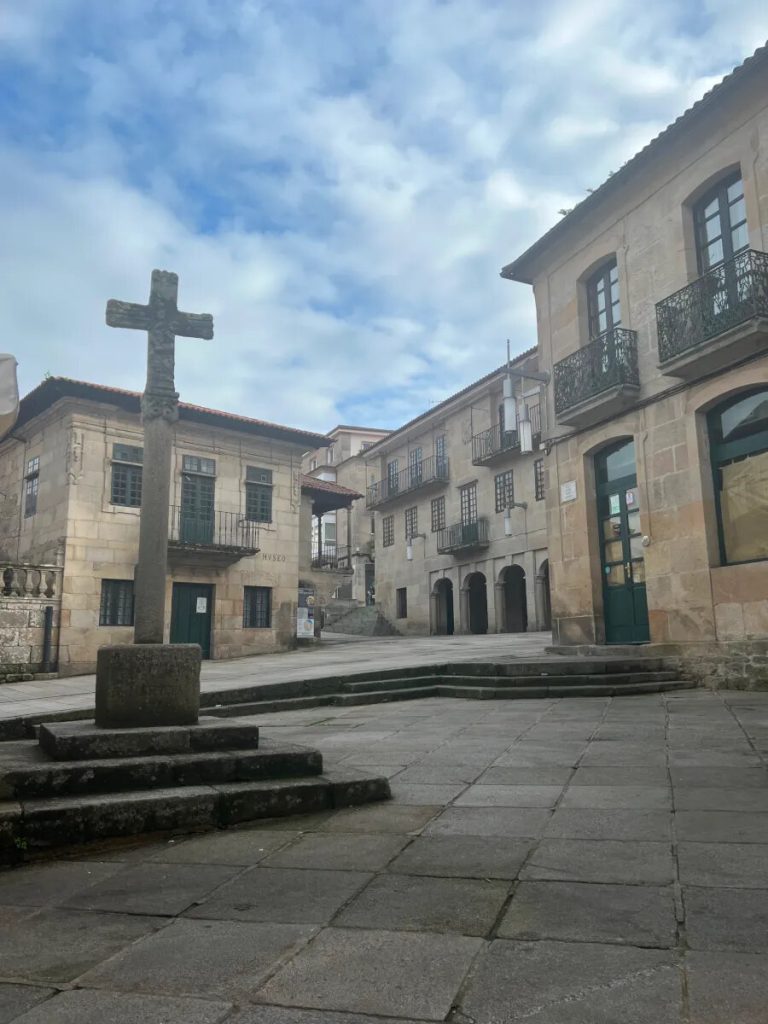





Our walks along the river




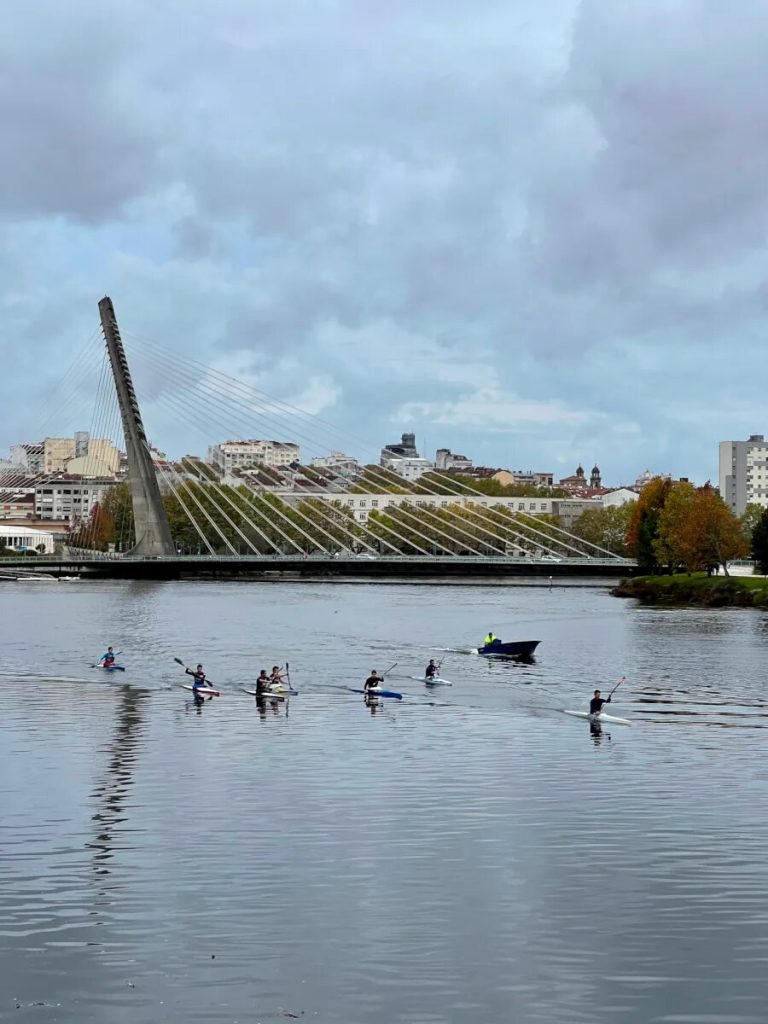



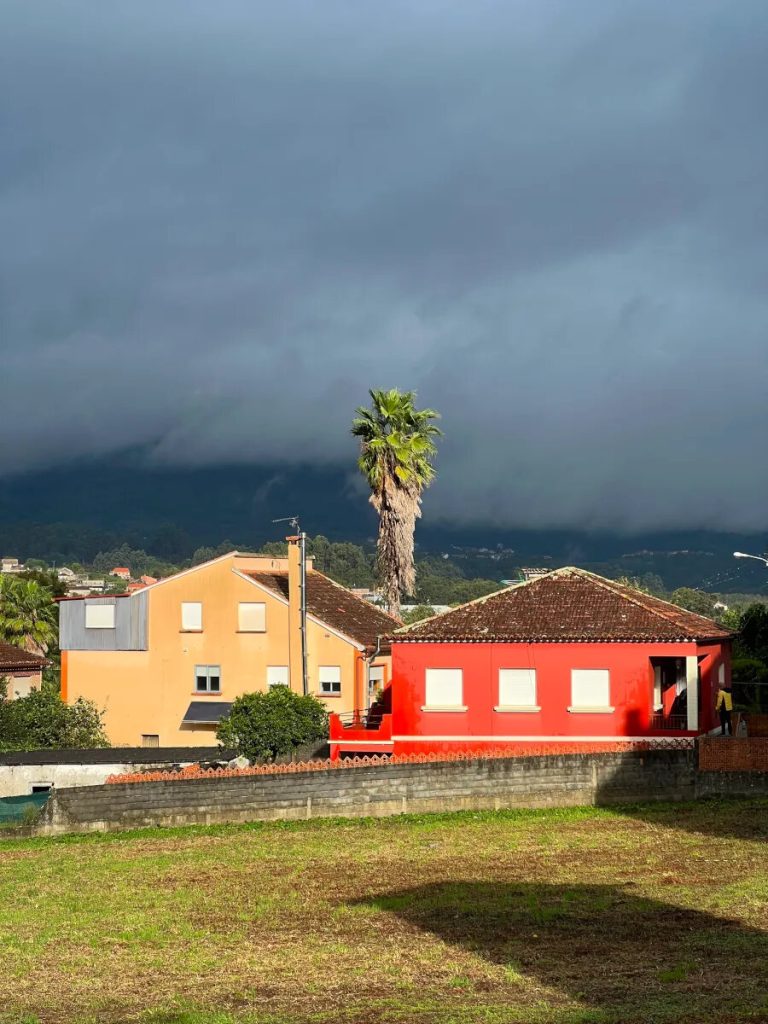
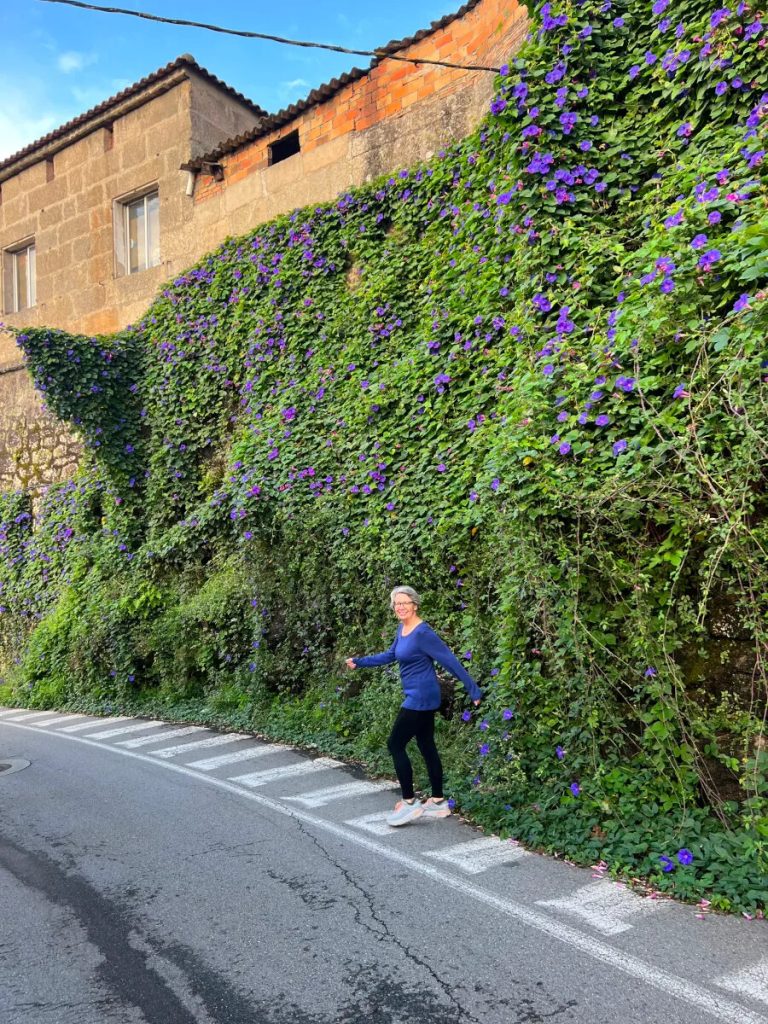



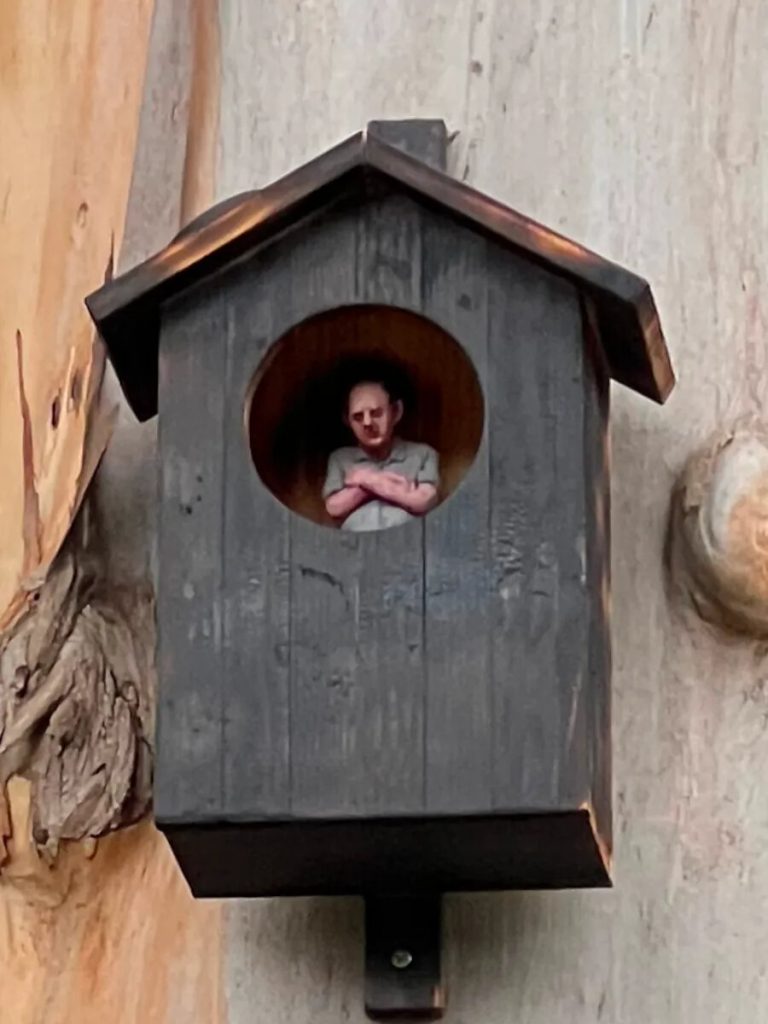


Pontevedra’s Historic Center
The “El Camino” pilgrimage route is not a single path but rather a network of paths, leading to Santiago de Compostela. Even when we visited Benidorm on the central east coast of Spain, we saw signposts marking the El Camino route. The El Camino is like a circulatory system with major arteries. Thus, many people misperceive the major east-west route across northern Spain as a singular route. Pontevedra lies on a north-south artery for pilgrims making the journey from Portugal. Again, the original medieval bridge was once the only crossing point at the Lérez River. As a result, you see evidence everywhere of Pontevedra’s role as a resting point for pilgrims. Most notably, the El Camino signposts mark the path right through the center of Pontevedra’s historic center. Pontevedra also has a large number of hostals for pilgrims. Finally, you see the walkers themselves with their hiking boots and backpacks passing through at all times of the day. El Camino has been a pilgrimage route since the 9th century and is definitely still a thing today.
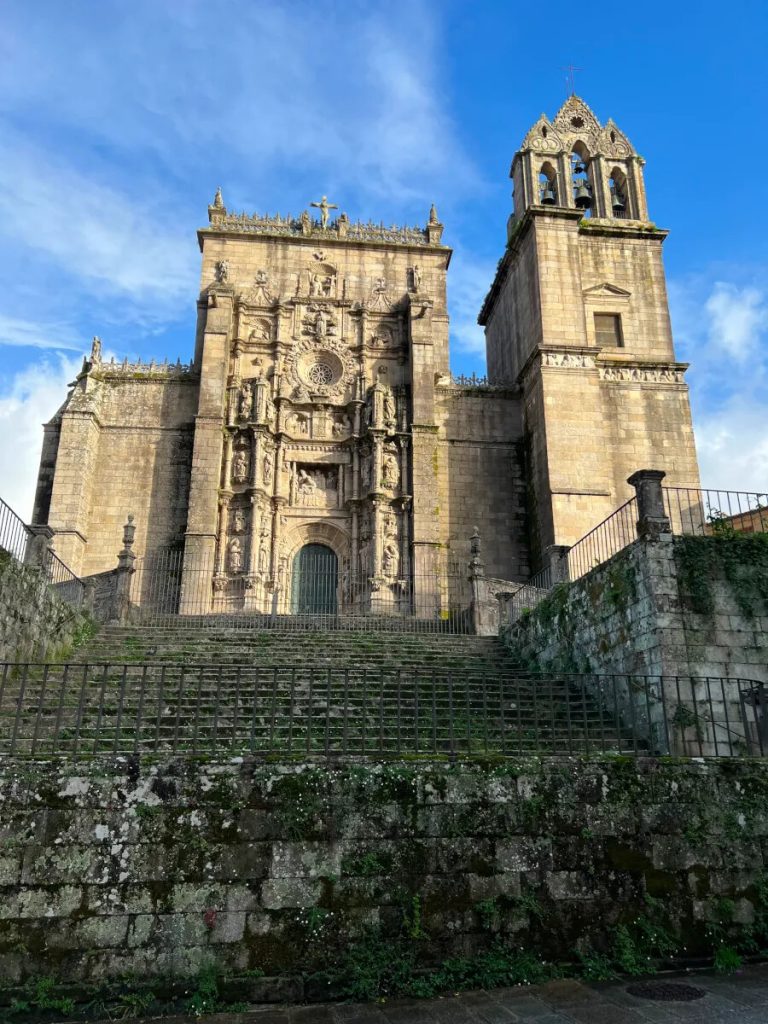






Click here to learn more about the Tertulia Monument. Click here to learn more about Alexandre Boveda.


And in the spirit of “round metal discs”, as a native of northeast Wisconsin, I’m always on the lookout for manhole covers from Neenah Foundry (you wouldn’t believe some of the places I’ve seen them). In the second photo, the manhole cover is not a product of Wisconsin manufacturing but I was nonetheless impressed with the creative embellishment.









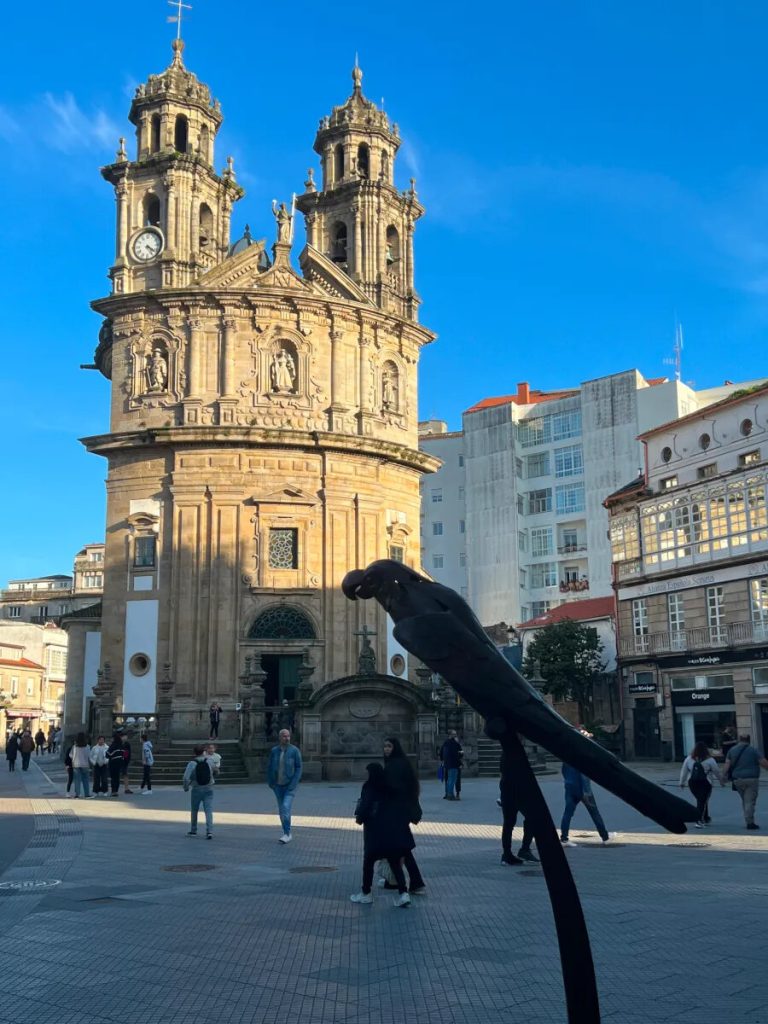
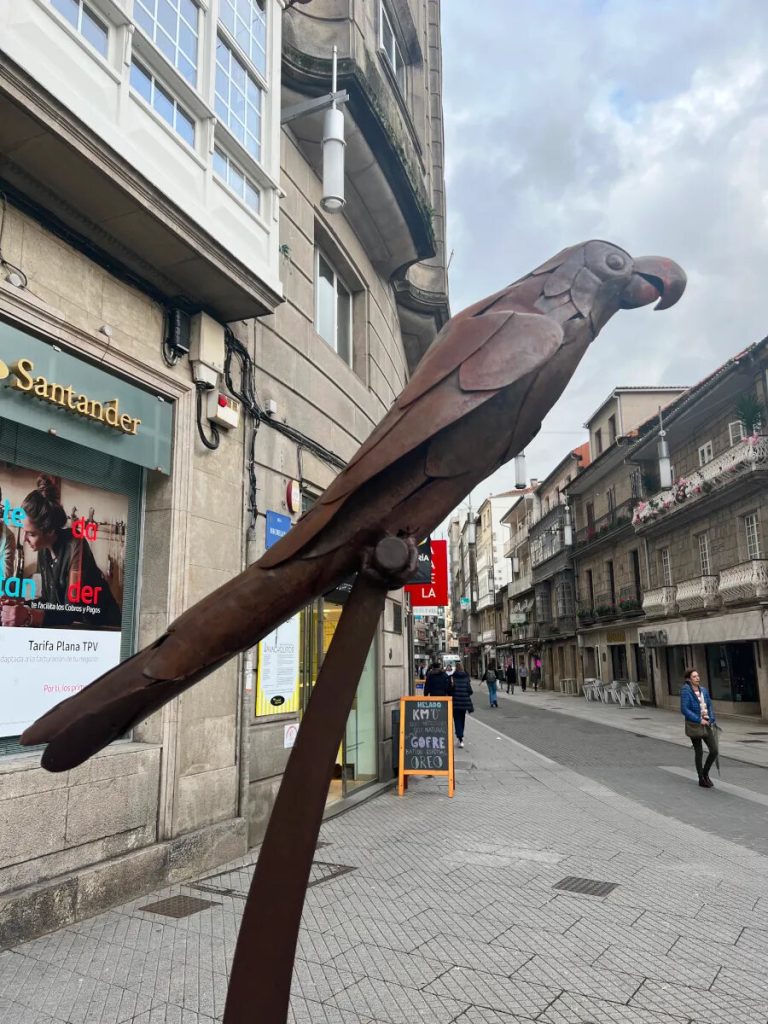

We passed this parrot statue a bunch of times before getting the background on why it’s there. As the story goes, this parrot lived in a pharmacy on the spot of the statue at the turn of the century. The parrot had an impressive speaking ability and also had lived with soldiers at one point, thus leaving him with a very colorful vocabulary and a disposition for sarcasm This made him something of a local celebrity. The parrot died in 1913 (maybe as a result of too many snacks from visitors) and the town has ever since commemorated its burial and memory with festivities in early February. The pharmacist named the parrot Ravachol after an infamous French revolutionary of the time (who was executed by guillotine at the age of 33; seems to be a theme).
The Wikipedia article has an amusing entry on Ravachol. It’s worth reading and can be found here. The article hypothesizes that the parrot descended from a cargo of South American parrots being carried back from the New World in the 1702 when the ships were attacked by the British and wrecked on the Galician coast. The parrots somehow managed to survive and a few were caught by locals as pets.

Every American school kid knows Chris Columbus was Italian and that he sailed to the New World in the “Nina, the Pinta, and Santa Maria” (at least this was common knowledge to kids in 1978).
So get a load of this monument!
“Mas de medio milenio ha, que en esta ribera del Lérez se construyo la carabela Santa María “La Gallega”, sobre la que el Almirante Pontevedres Cristobal Colón cambio el destino del mundo.”
Translation:
“More than half a millennium ago, the caravel Santa María “La Gallega” was built on this bank of the Lérez, on which the admiral Pontevedres Cristobal Colón changed the fate of the world.”
If I’m not mistaken, the Pontevedra Rotary Club is claiming some connection to Christopher Columbus as either a native son, as an admiral in their Navy, or just as a famous explorer whose flagship was built in Pontevedra and christened with the name Santa Gallega. This is the second time we have seen a claim on the identity of Christopher Columbus in Galicia and an insinuation that he was not Italian, but rather a Gallego. The origin of the Santa María is also clouded by time, but the Wikipedia article on the Santa María specifically addresses “The Pontevedra Theory”.
Also, the restaurant in the background is where we had our awesome 22 Euro 3-course lunch for two.

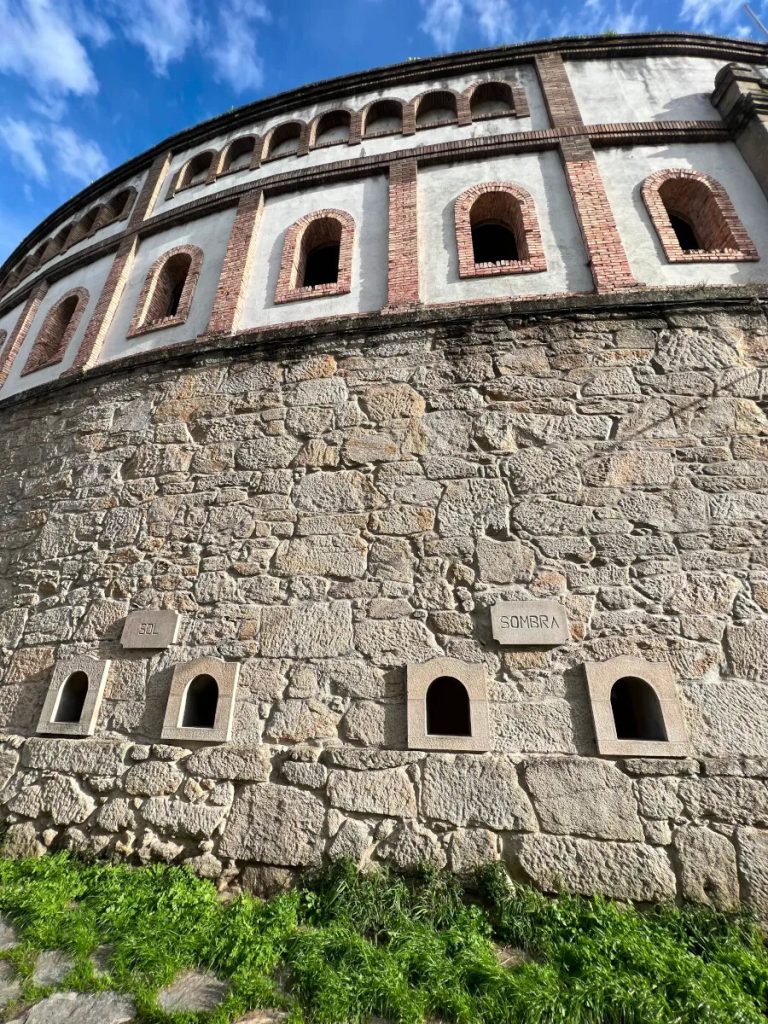






Our apartment
We rented an Air BnB for our 25 day stay in Pontevedra and stayed in a third floor loft unit with a large living space, a nice work area, a kitchen, and a single bedroom. From a sustainability standpoint, it was more than two people need but we sure enjoyed having some space and being able to unpack our suitcase for a few weeks. With lots of windows, it was bright and open in the daytime. The front balcony looked down onto the narrow street. The back windows looked at the “court area” in the center of our block and at the backs of other apartment building with units much much smaller looking than ours. We paid less than $80/day for this place and had no additional utility or wifi expenses. The TV could show Netflix so we even spent some time lounging and watching shows.




A trip to the grocery store
During my Navy deployments, I always enjoyed visiting grocery stores and markets to compare and contrast what was being sold. With a kitchen and 25 days of time, we became regular customers at the neighborhood grocery store. Wanted to share a couple observations.
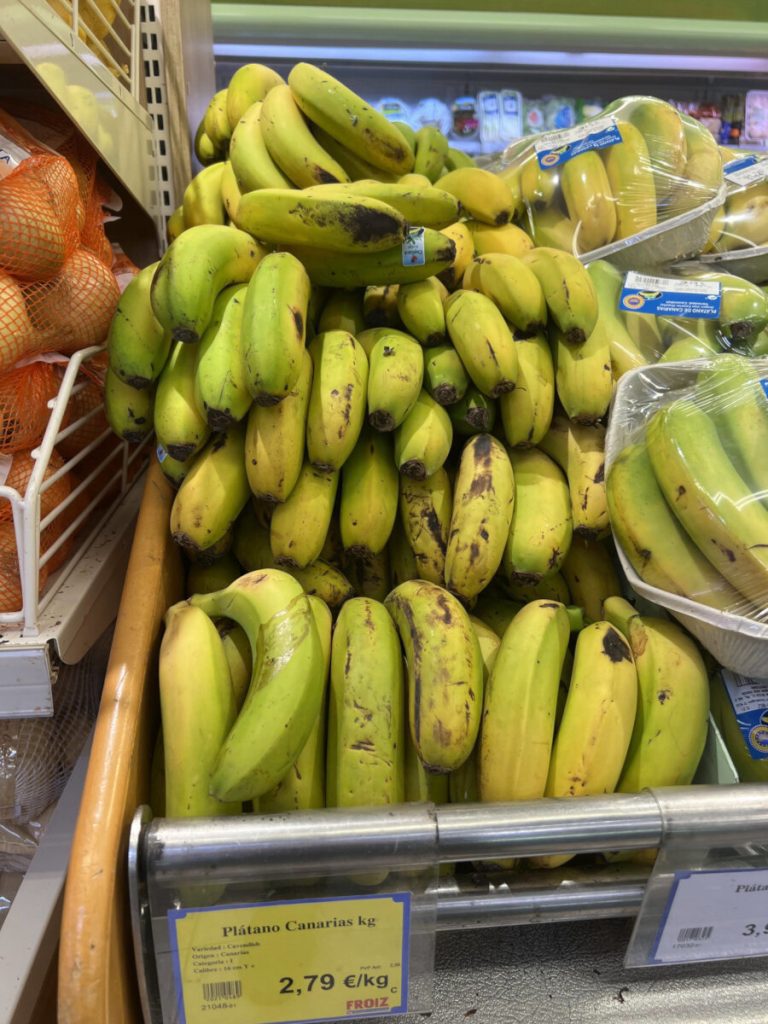

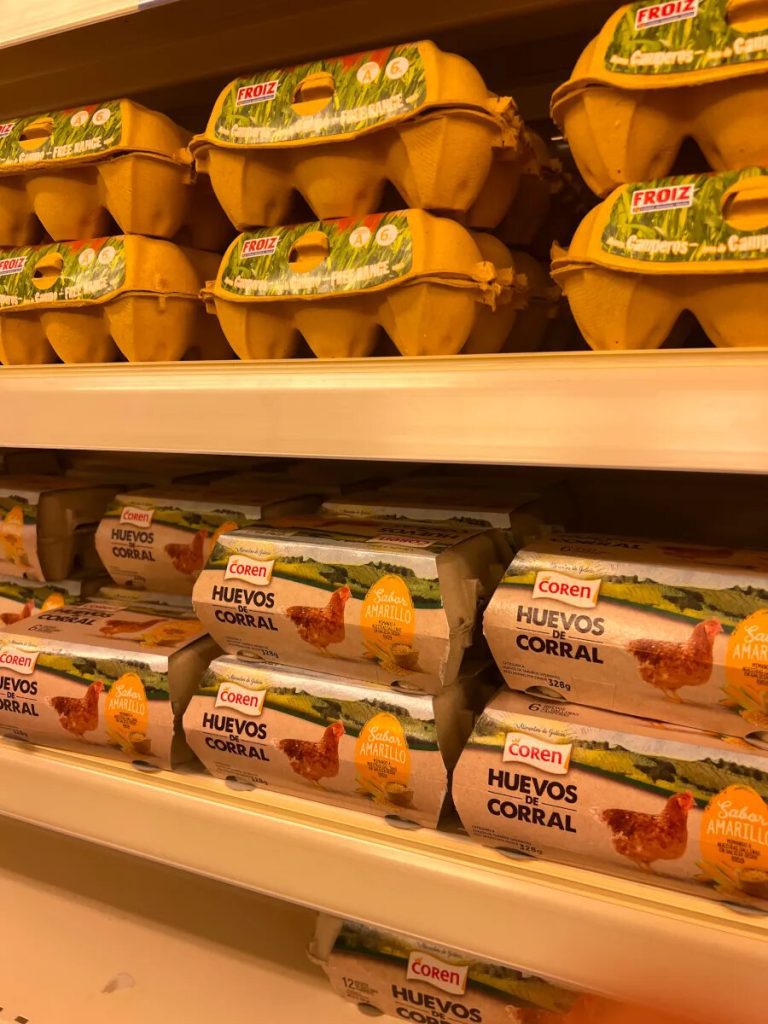
Food and Dining
I’ve said before we do not identify as foodies, but the cuisine and the dining experience is a big part of learning about other cultures. Here’s a sampling of our dining adventures.




$22 for a full meal. No tax. $2 tip.






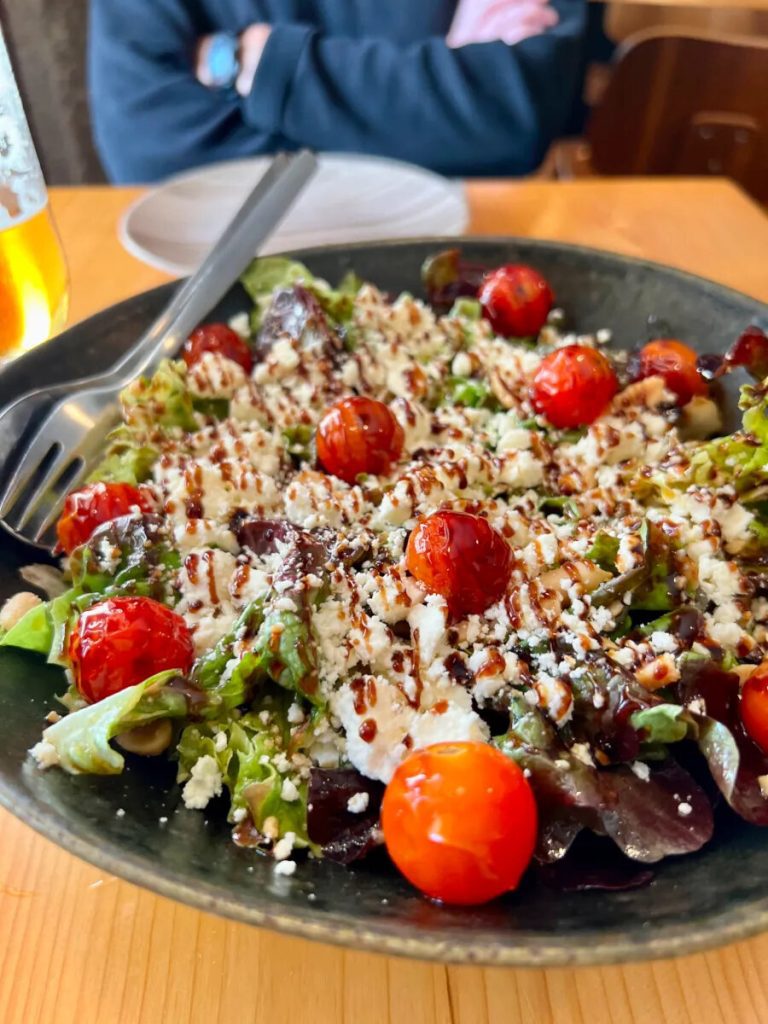


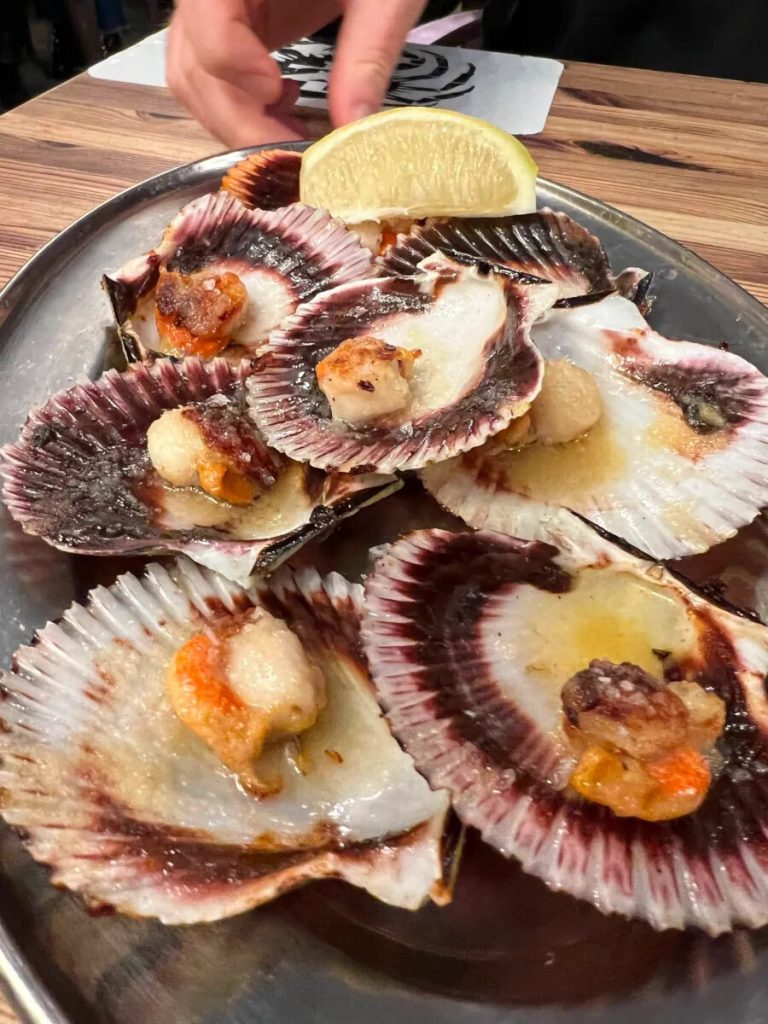
Farewell, Pontevedra
Pontevedra was a good choice for recuperation. We probably could have found better weather in other parts of Spain at this time of year but the rain didn’t really stop us from seeing what we wanted to see and, in ways, it helped us focus on relaxing in our apartment a bit. We did the planning (hotel, air travel, etc) for the next phases of our trip and locked in plans for our Christmas and New Year celebration with our kids in Andalusia.
Pontevedra should be applauded and visited for its efforts in “pedestrianizing” the city center. You still have to watch out for delivery trucks, street cleaners, and food delivery scooters, but we loved walking around the city center without the noise, smell, or danger of heavy traffic.
We had to dig a bit to find it but the history of this city is rich. Aesthetically, it does not grab you immediately like Santiago de Compostela, A Coruña, or Lugo, but it has a charm that took hold more and more with each of our walks.
25 days is not enough to know a place well but it is enough to feel the warmth of familiarity and to take a walk without needing a map to find where you are going or to get back to your starting point. We wish we could have stayed longer but the clock is ticking on our 90-day tourist visa and we need to spend some time outside the “Schengen Area” so we can come back and enjoy southern Spain over the holidays with our kids.
Thank you, Pontevedra, for a great stay!



